Church of MO: 2012 BMW K1600GT Review
It only seemed fitting, after posting a 2022 BMW K1600 B review last week, to revisit Herr Duke’s review of the original six-cylinder Bavarian butt missile ten yeas ago. The basic building blocks really haven’t changed; only the electronic controls and features have stepped up over the years. The biggest surprise is what hasn’t changed much. The 2012 GT with Premium Package sold for $24,540; the 2022 bike with PP is listed at $28,285.
Sportier than you think
Regular readers will remember our glowing review of the GTL in which we wrote: “The venerable Gold Wing still holds a clear superiority in passenger accommodations and a slight advantage in ultra-low-speed handling, but the K1600 GTL otherwise significantly advances the super-touring category in every other way possible.”
But the GTL isn’t the only flavor of the sexy and techie K1600 available. Sporty riders will be more interested in the GT version, which is largely the same machine but with more aggressive ergonomics and without the GTL’s large top box on back. The K1600s are, according to BMW Motorrad Director Hendrik von Kuenheim, “Core elements of our market offensive.”
While the GTL pampers with a broader and lower seat and greater stowage capacity, the GT falls into the large sport-touring category. Its riding position is sportier than the GTL yet still very comfortable
Footpegs are placed 50mm (about 2 inches) diagonally rearward and up, while its hand grips are 50mm further from the rider.
Two inches here and there don’t sound like much, but the GT’s ergos are clearly preferable for sport riding, giving a rider a feeling of greater connection with the Duolever front end and providing superior ground clearance when leaned over. Suspension damping rates are slightly firmer for tighter control when ridden briskly.
The GT has an identical rake, trail and wheelbase as the GTL, but a few other differences make themselves apparent. A 6.3-gallon fuel tank won’t take you quite as far as the GTL’s 7.0 gallons, and the absence of the GTL’s trunk mounted high and to the rear gives the GT a livelier roll rate when pitched into corners.
Another small but beneficial distinction is a slightly louder exhaust system that a BMW engineer says is pushing sound-limit restrictions. He used a German word to describe it, kerniger, meaning robust, or “a little bit more.” Its resonance is slightly but poignantly burlier, allowing a rider better access to one of the most tuneful exhaust notes in all of motorcycledom. For a delicious earful, check out the 55-second mark of our GTL review video in which a GT’s 1649cc Six screams all the way to its 8400-rpm rev limiter.
We recently had a GTL on a dyno to give us an idea of how much of the K1600’s claimed 160 crankshaft hp is lost through its six-speed transmission and shaft drive, and we were a little underwhelmed by the 121.6 pones at 6800 rpm we recorded. That’s a 24% power loss, significantly more than the 15-20% loss typical of shaft-driven bikes. The 132.7 hp Cycle World recorded on its dyno 1000 rpm higher is closer to what’s expected. We registered a torque peak of 105.1 ft-lb at 4900 rpm, also lower than the CW bike.The GT’s suit looks like it came from the Big & Tall store, but some built-in custom tailoring is available in terms of seat height. The standard saddle sits at 31.9 inches, but it can be adjusted upward to 32.7 inches for enhanced legroom. Short riders might want to opt for the low-seat option, which brings its height down to 30.7 inches or 31.5 inches. A GTL seat can be fitted to the GT if more comfort is desired.
The standard seat on its lower setting pleased my rump, although our testing during the press launch didn’t last longer than about an hour at a time.
Once a rider gets distracted from the luscious engine, it’s the GT’s amazingly competent chassis that deserves a rider’s attention. Turn-in effort is much lighter than expected, responding very quickly despite the GT’s fully fueled (but without saddlebags) 703-lb curb weight.
Some credit must go to the new Metzeler Z8 rear tire, a 190/55-17 donut rather than the squatter and more typical 190/50 which makes for heavier steering. The Z8s, reviewed here, also proved to be quite grippy for a sport-touring tire, allowing deeper lean angles than expected for a ship of this size. A post-ride perusal of footpegs showed about half the bikes at the press launch had yet to have their pegs scuffed.
The GT has a substantial $20,900 starting price, but even the base model is very well appointed. Heated grips are always nice, as is the bun-warming seat, while cruise control alleviates boredom when traversing Nebraska on the way to the Rockies. A central multifunction 5.7-inch TFT (Thin Film Transistor) color display panel contains an on-board computer operated by a slick and convenient Multi-Controller, a knurled wheel that rotates around the left handlebar and can be toggled in two directions to select different settings.
A power adjustable windshield, narrower and shorter than the GTL’s, provides a range that suited a wide variety of riders. It was noisy in its low position for my 5-foot-8 body, but it got quiet not much higher. Tall riders, like the 6-foot-4 Roland Brown, said he can be fully ensconced with the shield near its highest position. With the screen in its upper ranges, the airflow was quiet enough at 100 mph to require no earplugs.
The base GT is also equipped with BMW’s Integral ABS which is based around a stout triple-320mm-disc setup and dual 4-piston calipers up front. This package has no trouble rapidly slowing the K16, performing seamlessly even under duress with a firm feel from the lever. More standard niceties include BMW’s E-Gas throttle with three power modes, a Xenon headlight with dynamic leveling, and LED turnsignals that use an effective self-canceling program.
An optional upgrade is the misleadingly named Standard Package, stickering at an MSRP of $23,045. It adds the highly desirable ESA II electronic suspension adjustment that enables instant adaptability to best suit particular loads and roads. Also included in the $2145 package is traction control, an innovative Xenon adaptive headlight that can peer around corners, a tire-pressure monitor and pre-wiring for BMW’s Garmin-built Navigator IV, available only separately from your dealer for around $850.
ESA is a brilliant feature, offering on-the-fly adjustments that can transform the GT from a couch to a sportbike at the push of a button. Set to the Sport mode while railing a two-lane road at speeds occasionally upward of 100 mph, the suspension offered exemplary control for such a big girl. And the adaptive headlight, which uses a mirror to direct its beam around corners, is a godsend for night riding.
If your budget allows and you need tunes when you roll, your K1600 GT should be spec’d with the Premium Package that lists for $24,540. It adds a decent audio system with a tuner, satellite radio, and iPod/USB integration, all of which can be wirelessly transmitted via Bluetooth to helmet speakers. The high-end package also includes a central-locking system and alarm.
The Verdict
BMW’s K1600 platform is nothing short of remarkable. The GTL rivals the venerable Gold Wing in terms of luxury while offering greater sporting capability and many extra features. Look for a comparo of this duo next week.The GT, meanwhile, is imbued with enough sporting capability to compete with smaller displacement sport-tourers like Yamaha’s FJR1300 and Kawasaki’s Concours 14. In fact, we’ll be riding the Kawi and K1600GT to the USGP at Laguna Seca this week so we can find out how they compare. The departed K1300GT took top honors in our 2009 Sport-Touring Shootout, so it’ll be interesting to see how the new GT matches up with the C-14.
To have a single platform that can compete with both a Gold Wing and a Concours 14 is a sensational accomplishment. The K1600 series is nothing less than astounding, offering a full array of features, up-to-date electronics, and an enviable six-cylinder mill that will go down in history as one of the greatest motorcycle engines.
Budget-minded riders will scoff at the GT’s $20K-plus MSRP. But to those who can afford the entry fee, BMW’s large-and-in-charge sport-tourer will both pamper and thrill.
Related Reading
2012 BMW K1600GTL Review
2012 Honda Gold Wing Review
INTERMOT 2010: BMW K1600GT / GTL Unveiled
2009 Sport-Touring Shootout
BMW Unveils New 6-Cylinder K1600GT and GTL
BMW K1600GT / K1600GTL Preview
EICMA 2009: BMW Concept 6
More by John Burns



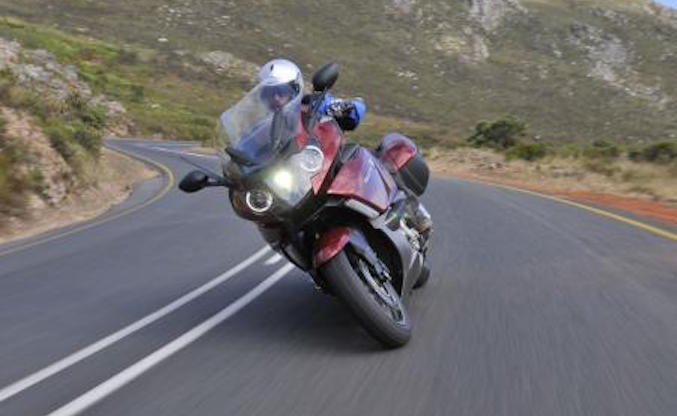










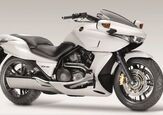
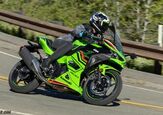
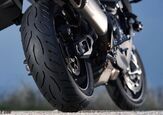


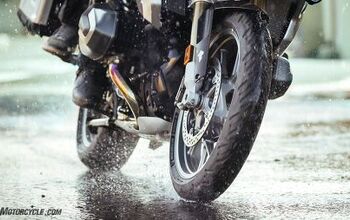
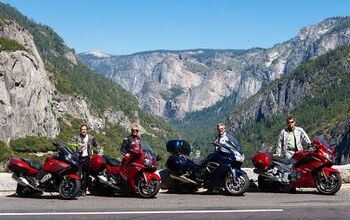
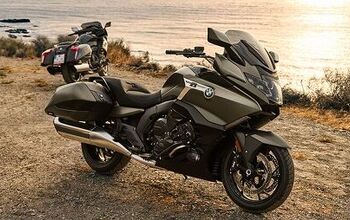
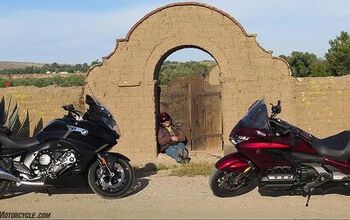
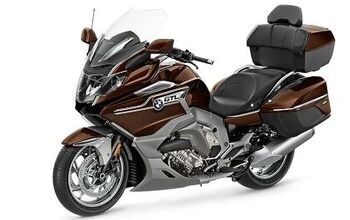
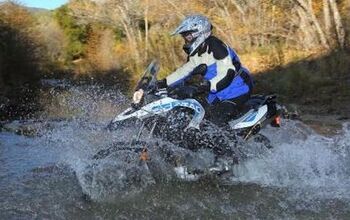

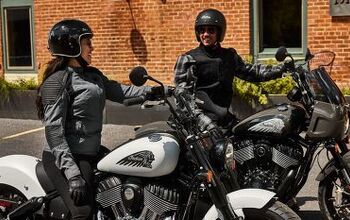
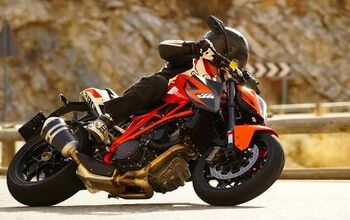
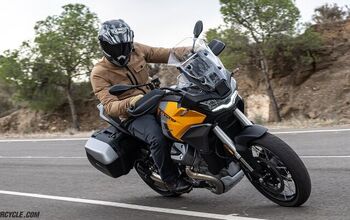

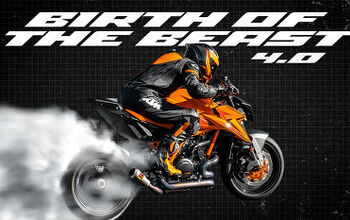

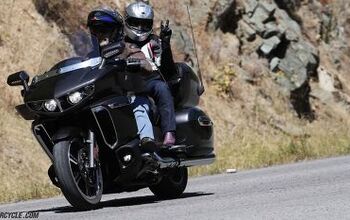
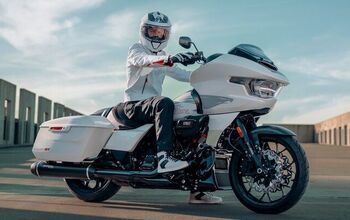
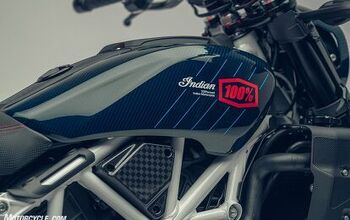
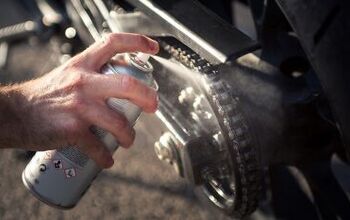
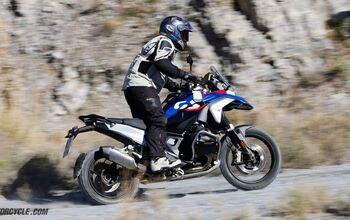
Comments
Join the conversation
John is up early this morning.
When I saw it was a review by His Dukeness, I immediately scrolled down for the unicycle shot. It apparently took two more years and a top box to get the shot:
https://www.motorcycle.com/...
I remember how impressive that 6-cycl seemed when this was announced, but it was housed in such a big, heavy, (and expensive) package 😳
Around the same time, Horex was working on bringing out a naked standard with a small angle V6. That seemed like a more promising option for a while, but that never made it to the US, so heavyweights from BMW and Honda are the only options. At least BMW's come in a couple of flavors (though they are both still huge).